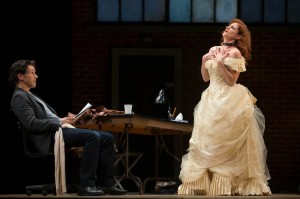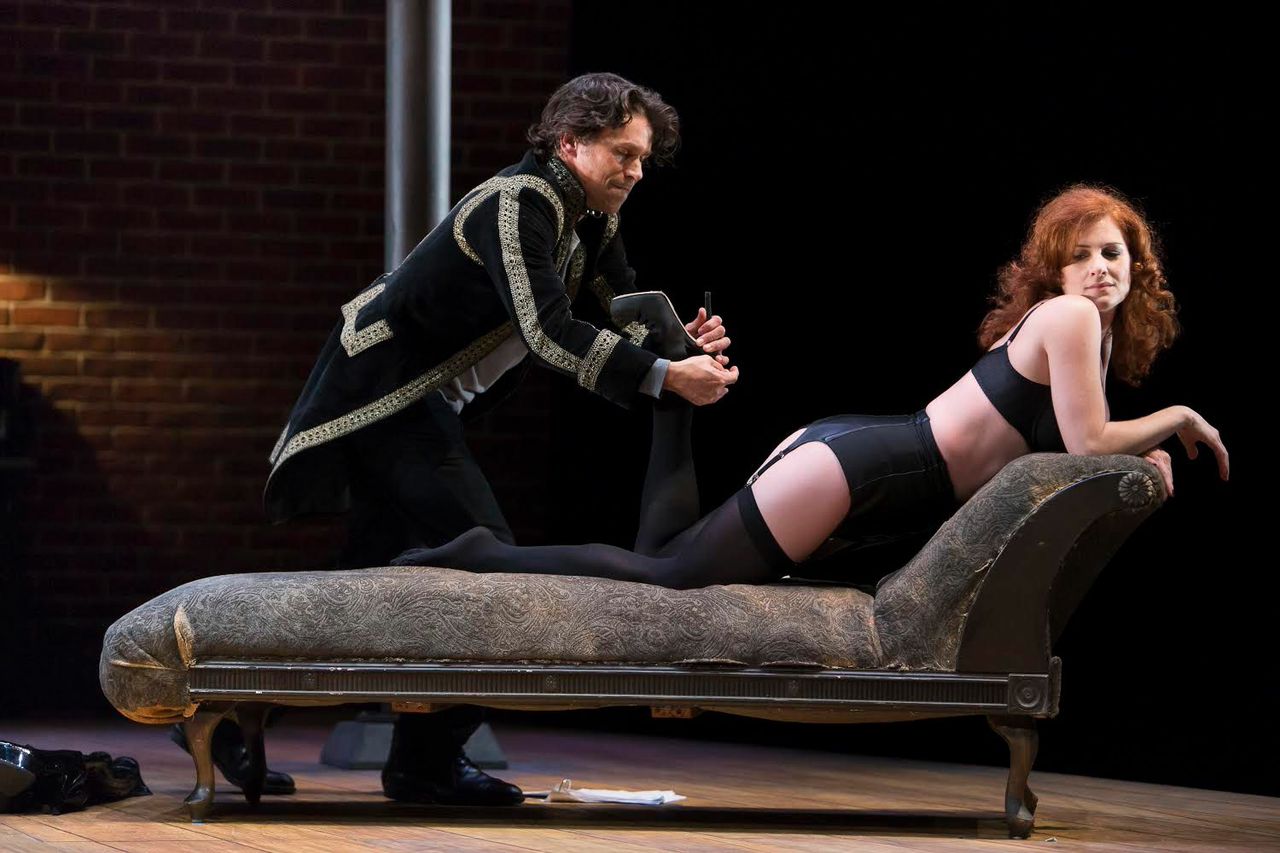The Centaur Theatre’s newest play is a spectacle of sadomasochism
Sex and power: the two are inextricably linked. Sex and relationships may always boil down to power games, though never quite so obviously as when there are gags, whips, and consensual sexual humiliation involved.
Venus in Fur, the Tony-nominated play by David Ives, currently at the Centaur Theatre until Nov. 9, uses the subtext of sadomasochism to reveal the politics of gender roles and fluidity of power in sex play.
The story, which is a self-aware and very meta adaptation of the 1870 novella Venus in Furs, by Leopold von Sacher-Masoch. And yes, as the character of Thomas in the play reveals, Sacher-Masoch gave his name to what we now know as masochism, a theme that prevails throughout his novel.

In Sacher-Masoch’s original version, he tells the story of the relationship and power play between characters Severin and Wanda. He is infatuated with her, though more so with the idea of a dominant and unforgiving embodiment of Venus, and he offers himself as her slave. Thus ensue scenes of female-dominant sexual humiliation, which encounters a blip when Wanda meets a handsome and ruthless Greek man to whom she wants to submit. At this juncture, Severin loses his submissive kink and we see the power return to his hands.
The play opens with director Thomas auditioning an actress for a role in his upcoming adaptation of Venus in Furs. Vanda (not-so-coincidentally sharing almost the same name as the play’s titular character) is a rough-around-the-edges modern-day Venus who comes to audition for the role of Wanda. Thomas, the on-stage writer-director, reads the part of Severin for the audition.
As they go through the scenes as Wanda and Severin, their own power struggle develops, and the audience becomes increasingly aware of just how much each of them mirrors the characters they are portraying—much to Thomas’ objections.
Wanda/Vanda, played flawlessly by Carly Street, dashes seamlessly between the two Venus types: the regal and majestic Wanda, and the flighty, down-to-earth, rough-speaking Vanda.
Rick Miller injects stoicism into his portrayal of the submissive Severin, and of Thomas, who is reluctant to admit he shares the same desires.
Spoiler Alert: In the final, pivotal scene where Wanda and Severin fall out over her desire to submit to the Greek man, as their established power dynamic comes crashing down and becomes reversed, Ives interestingly has Thomas and Vanda switch roles, at her request. This makes it so that when Severin finally becomes the dominant party, his character is being played by a woman, while the submissive Wanda, played by Thomas, gets tied to a heating pole and begs for forgiveness.
It is here that not only the gender roles, but the character roles of Wanda/Vanda and Severin/Thomas become exceedingly blurred. As the director of the play Vanda is auditioning for, Thomas holds the power, though she surprises him at every turn in her portrayal. In suggesting edits and improvising his scripted dialogue, it is perhaps she who is really in control.
On the other hand, Wanda is dominant throughout her relationship on-stage with Severin, though by the fact that he is the one who requested the contractual arrangement of being her slave and effectively convincing her to agree, the audience wonders, as Vanda does, if perhaps he was always the one in control.
The emotional finale does not, as one might expect, culminate in Thomas and Vanda finally succumbing to their desires and having sex. Instead, she takes full Venus-form and makes him join her in a chorus of “Hail Aphrodite,” accompanied by sounds of thunder booming.
Venus in Fur is an intelligent and provocative investigation into sex and gender politics, infused with feminist wit and a lot of kink.
Tickets are available online through centaurtheatre.com/venusinfur or in person at the Centaur.




